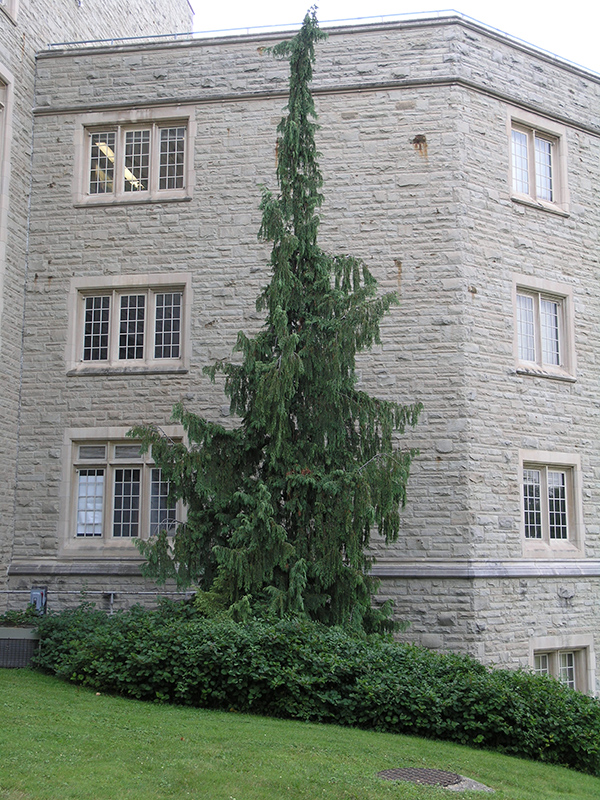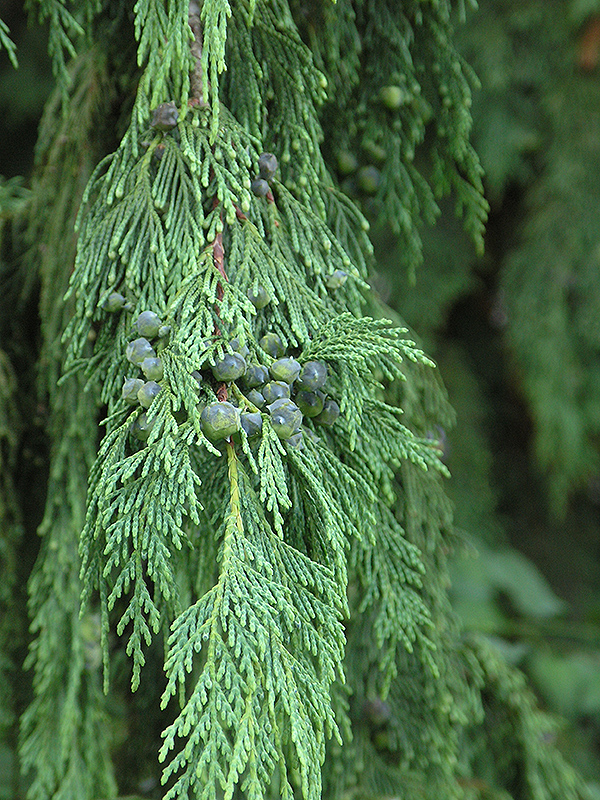
Woody > Callitropsis > Callitropsis nootkatensis > Callitropsis nootkatensis 'Pendula'
Callitropsis nootkatensis
'Pendula'
Weeping Falsecypress, Weeping Alaska Cedar.
Origin: Alaska to Washington, the Cascades to Oregon. Pendula is of horticultural origin. Callitropsis has undergone several name changes from Chamaecyparis to Xanthocyparis to Callitropsis.
Mike's
Opinion


"
A commonly planted landscape tree, however used in the correct situation, a tree with class. Variable forms, so choose carefully.
Michael Pascoe, NDP., ODH., CLT., MSc. (Plant Conservation)
"
| Family |
| Cupressaceae |
| Genus |
| Callitropsis |
| Species |
| nootkatensis |
| Cultivar |
| 'Pendula' |
| Category |
| Woody |
| Type |
| Tree (evergreen) |
| Synonyms |
| Chamaecyparis nootkatensis 'Pendula', Xanthocyparis nootkatensis 'Pendula' |
| Pronunciation |
| USDA Hardiness Zone |
| 5 - 8 |
| Canadian Hardiness Zone |
| 5 |
| Temperature (°C) |
| -23 - (-26) |
| Temperature (°F) |
| -10 - (-20) |
| Height |
| 10 m |
| Spread |
| 6 m |
Photographs
Description and Growing Information
Flowering Period
| General Description |
| Graceful, elegant tree with pendulous branches. |
| Landscape |
| Commonly used as a focal point, makes any landscape look majestic all year-round, especially in the winter season. Never have more than one in a setting; it gets to be too much. |
| Cultivation |
| Prefers a moist, well drained soil and needs protection from wind. |
| Shape |
| Pyramidal to weeping. |
| Growth |
| Medium |
| ID Characteristic |
| Pendulous branches and upright habit. |
| Pests |
| None serious. |
| Habitat |
| Horticultural origin. |
| Bark/Stem Description |
| Plated exfoliating, exposing reddish-orange on old bark, wind may strip this thin later off. New bark is silvery grey and is shiny. |
| Flower/Leaf Bud Description |
| Leaf tips have new scales waiting to emerge into a full scale. |
| Leaf Description |
| Scale-like, alternate with one scale on each side of the leaf branchlet, new shoots are dark green, with staminate flowers on the ends of many tips. |
| Flower Description |
| Pollination occurs from March- May. Pistillate and staminate flowers are about 3 mm in size with the staminate flowers borne at the end of the leaf tips. |
| Fruit Description |
| Dark reddish-purple about 5 mm in diameter, usually about 3-5 grouped in the same general area, spherical, with about 3 awl-like hooks coming off them. |
| Colour Description |
| Dark green in full-sun but often lighter in colour in partial shade. The green stands out in the winter, because branches shed the snow, thus making it a dominant accent in the landscape. |
| Texture Description |
| Soft to the touch when you run your hand along the leaf tips in the spring the seed pods drop off and hit the branches below making a trickling sound. A medium textured plant. |
| Notable Specimens |
| The A.M. Cuddy Gardens, Strathroy, Ontario, Canada. The Royal Botanical Gardens, Burlington, Ontario, Canada. |
| Propagation |
| They can be produced by seed, with a warm incubation period at about 5°C . Root by cuttings usually taken between late winter and early spring treated with indole butyric acid placed in perlite or peat moss; can also be grafted. |


